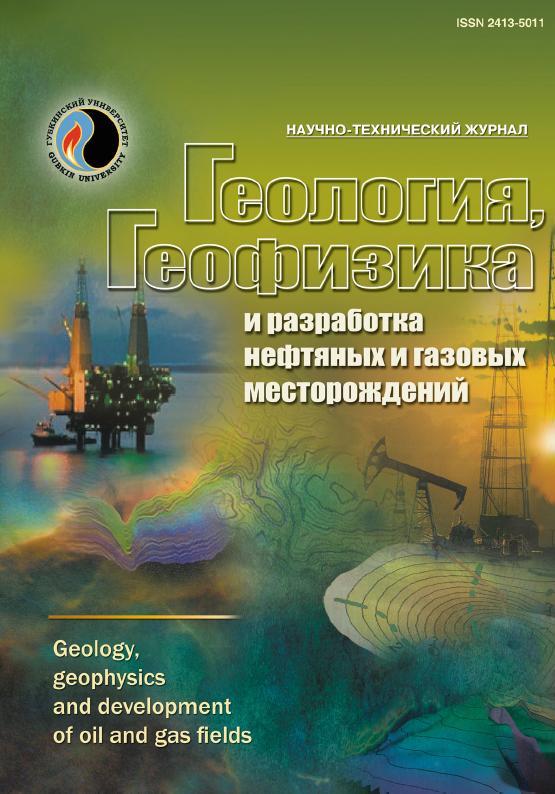Prediction of hydrates formation when developing natural gas deposits in Iran
UDC: 622.279.23/.4(55)
DOI: -
Authors:
ASHKAN AFRANEJAD 1
1,
POPLYGIN VLADIMIR V. 1
1
1 Perm National Research Polytechnic University, Perm, Russia
Keywords: natural gas deposit, hydrates, pressure, temperature
Annotation:
When developing natural gas fields, there occur a change of thermodynamic conditions of movement, phase state changes and there arise conditions for the formation of hydrates. The formation of hydrates in wells and field collection systems blocks production and transport of natural gas. Predicting the conditions for hydrates formation makes it possible to create technological regimes to prevent their formation. The results of experimental studies of changes of hydrate formation thermodynamic conditions and values according to the well-known models are compared. An additional model for predicting hydrate formation conditions is proposed. The conditions of hydrate formation were predicted for gas fields A and B located in Iran. At low pressures and temperatures the experimental models and the model used in this study are in good agreement with laboratory data, but as the pressure and temperature of hydrate formation increase, the accuracy of the models decreases. The best agreement with the experimental parameters was obtained using model proposed by the authors of his article and the Mann model. For the considered fields hydrate-free modes of natural gas movement have been determined.
Bibliography:
1. Zaporozhets E.P., Shostak N.A. Protsess obrazovaniya gidratov individual'nykh gazov // Neftepromyslovoe delo. – M.: OAO "VNIIOENG", 2016. – № 7. – S. 43–48.
2. Zobnin A.A., Titova L.E., Polyanskiy D.V. K voprosu vybora metodik rascheta usloviy obrazovaniya gidratov I i II tipov v programmnom obespechenii ASPEN HYSYS // Neftepromyslovoe delo. – 2019. – № 4(604). – S. 60–65. – DOI: 10.30713/0207-2351-2019-4(604)-60-65
3. Poplygin V.V., Poplygina I.S. Otsenka ratsional'nogo zaboynogo davleniya dlya zalezhey s vysokoy gazonasyshchennost'yu nefti // Neft. khoz-vo. – 2012. – № 10. – S. 104–105.
4. Lambert J.D. Association in polar vapours and binary vapour mixtures // Discussions of the Faraday Society. – 1953. – Pp. 226–233.
5. Peng D.Y., Robinson D.B. A New Two-Constant Equation of State // Industrial and Engineering Chemistry: Fundamentals. – 1976. – Т. 15. – Pp. 59–64. – DOI: 10.1021/i160057a011
6. Anderko A. Phase Equilibria in Aqueous System from an Equation of State Based on the Chemical Approach. Fluid Phase Equilib. – 1991. – Vol. 65. – Pp. 89–110.
7. Bozorgian A. Thermodynamic Modeling of Gaseous Hydrates // Journal of Engineering in Industrial Research. – 2021. – № 2(4). – Pp. 194–201. – DOI: 10.22034/JEIRES.2021.277824.1031
8. Langmuir I. Adsorbtsiya gazov na ploskoy poverkhnosti stekla, slyudy i platiny // Zhurnal Amerikanskogo khimich. ob-va. – 1918. – № 40(9). – S. 1361–1402. – DOI: 10.1021/ja02242a004
9. Sloan Е.D. Clathrate Hydrates of Natural Gases – New York, 1998. – 752 p. – DOI: 10.1201/978.1420008494
10. Kamari E., Oyarhossein M. Experimental determination of hydrate phase equilibrium curve for an Iranian sour gas condensate sample // Journal of Natural Gas Science and Engineering. – 2012. – Vol. 9. – Pp. 11–15. – DOI: 10.1016/j.jngse.2012.05.004
11. Baillie C., Wichert E. Chart gives hydrate formation temperature for natural gas // Oil & Gas Journal. – 1987. – Vol. 85(4). – Pp. 37–39.
12. Vapor solid equilibrium ratios for structure I and structure II natural gas hydrates / S.L. Mann, L.M. McClure, E.D. Sloan, F.H. Poettmann // 68th Ann. Gas Proc. Assoc. Conv. – San Antonio, TX, 1989. – Pp. 60–74.
13. Engineer Hydrates of Natural Gas / J.F. Makogon [et al.]. – Tulsa, Oklahoma: Penn Well Books, 1981.
14. Towler B., Mokhatab S. Quickly estimate hydrate formation conditions in natural gases // Hydrocarbon Processing. – April 2005. – № 84(4). – Pp. 61–62.

